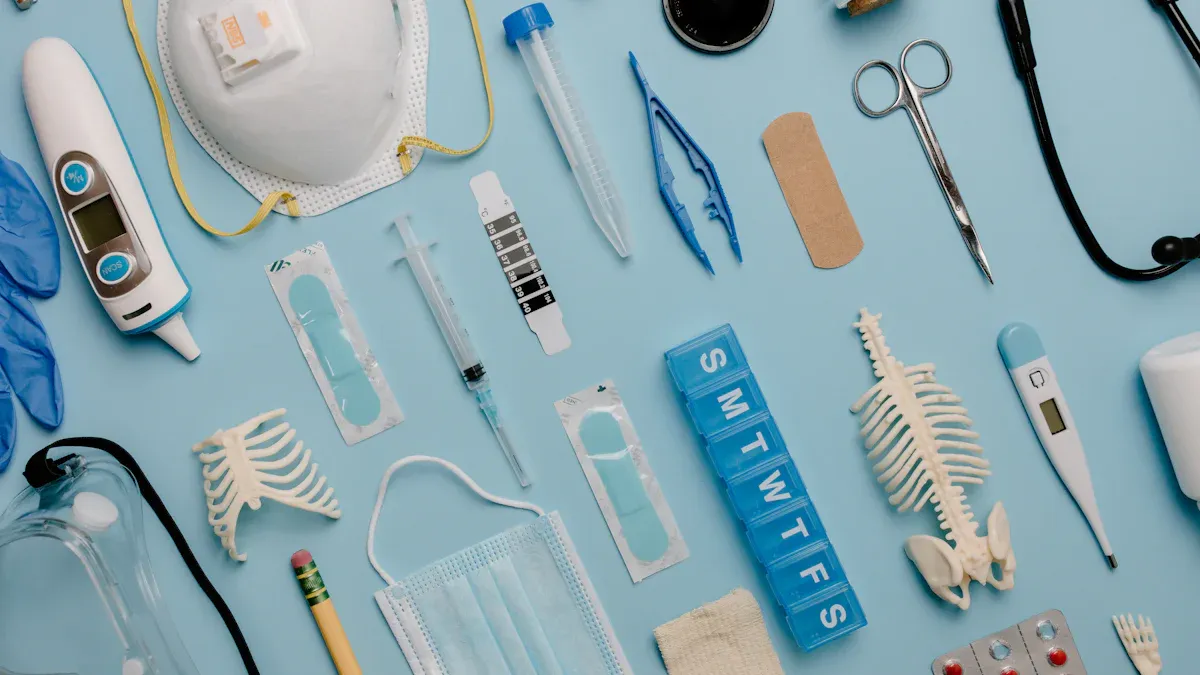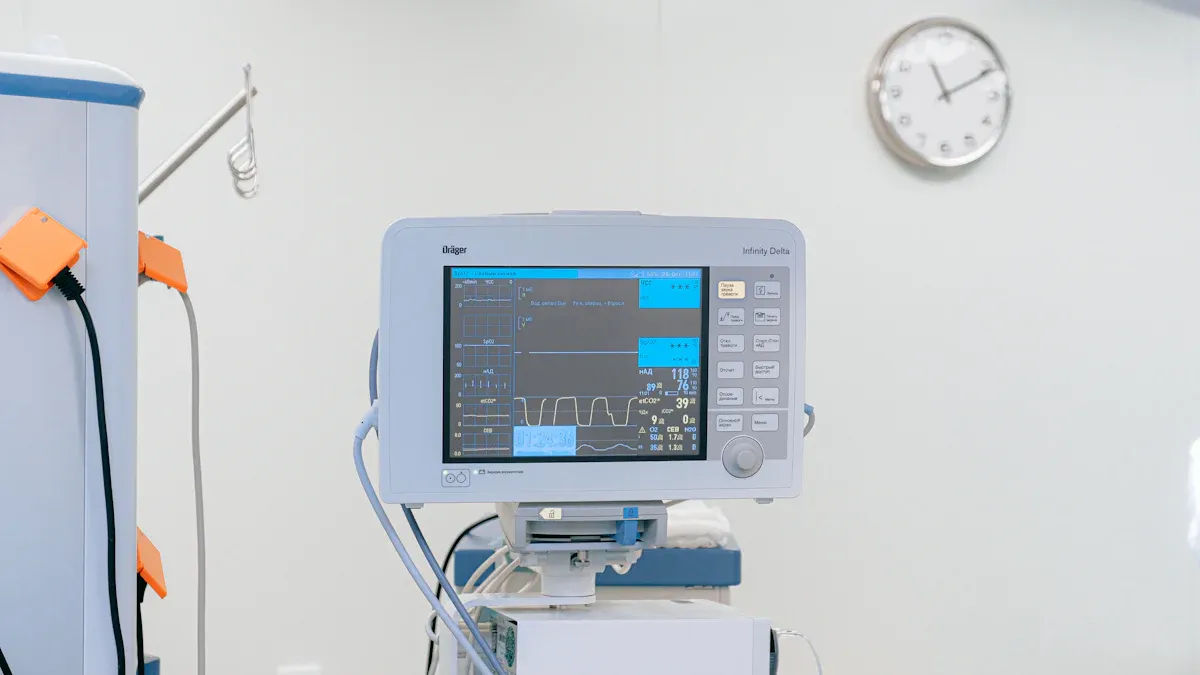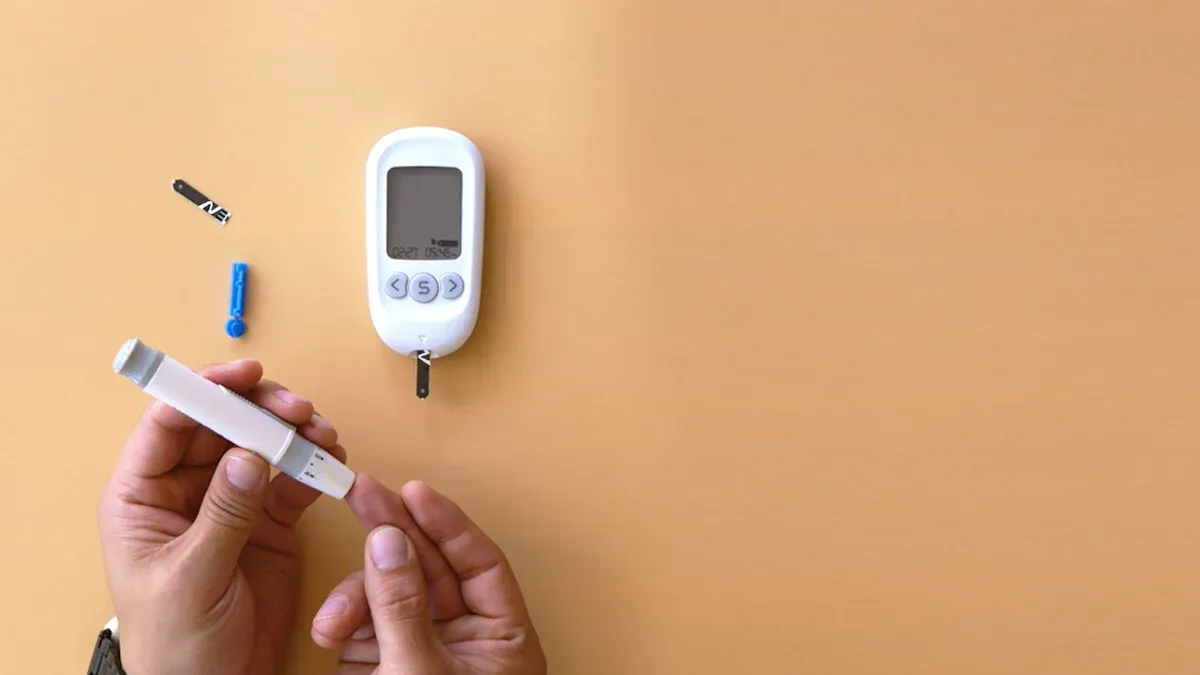Miniature Vibration Motors: Pros and Cons for Medical Device Applications

Miniature vibration motors are important for improving medical technology. Their small size makes them easy to use in devices. They are found in health monitors, prosthetics, and therapy tools. These motors give touch feedback or help with muscle therapy. The healthcare industry uses them more and more for new ideas. From 2025 to 2035, their use in medical devices will grow a lot. The market is expected to be four times bigger, growing 15.5% each year. This shows how they help make patient care better.
Key Takeaways
Small vibration motors help medical devices by giving accurate vibrations. This improves touch feedback and therapy, making patient care better.
Their tiny size and light weight are perfect for portable tools. These tools are very useful for home care and mobile health checks.
These motors save energy, making batteries last longer in wearables. This means fewer recharges, helping both patients and doctors.
But, small vibration motors can be noisy and wear out fast. This might make devices less reliable and less comfortable to use.
These motors are used in health monitors, drug systems, and surgery tools. They show how useful they are in today’s healthcare.
Overview of Miniature Vibration Motors
Definition and Functionality
Miniature vibration motors are small devices that create vibrations. They work by moving in circles or straight lines. These motors give touch feedback or stimulation. This makes them great for tasks needing accuracy and control. Their performance depends on things like vibration strength, frequency, and power needs. These details help the motor work well and do its job right.
Specification | Details |
|---|---|
Helps the motor work properly in the device's setup. | |
Vibration Amplitude | Shows how strong the vibrations feel, key for medical use. |
Voltage and Current Requirements | Must match the device's needs for smooth operation. |
Compatibility with Device Design | Size and weight must fit the device for easy use. |
Haptic Feedback Precision | Important for touch-based features in medical devices. |
These motors can be used in many medical tools. Their ability to make accurate vibrations helps meet healthcare needs.
Importance in Medical Devices
Miniature vibration motors are important for making medical devices better. They are useful when touch feedback or vibration is needed. For example, studies show vibrations can help people with Parkinson's disease move better. Devices like the Emma Watch use vibrations to reduce shaking. This helps people do tasks like writing or drawing more easily. Vibrations improve movement by boosting sensory signals.
Their small size makes them easy to add to wearable monitors and surgical tools. They give accurate touch feedback, making devices easier to use. This makes miniature vibration motors a key part of improving medical technology.
Advantages of Miniature Vibration Motors in Medical Devices

Small Size and Lightweight Build
Miniature vibration motors are tiny and light, making them great for medical tools. Their small size lets them fit easily into portable devices. This makes the tools easier to carry and use. Portable devices are very important in healthcare today.
Portable medical tools are becoming more popular. The market may reach $204.3 billion by 2034.
Devices like wearable monitors and mobile diagnostic tools help patients stay safe. They reduce trips to the hospital.
Older people prefer care at home, so small and efficient devices are needed.
New technology, like special circuits called ASICs, helps make medical tools smaller. These circuits combine many functions into one chip. This creates small but powerful devices. For example, handheld ultrasound scanners and ECG monitors give quick results. They are useful in emergencies or rural areas. Adding small vibration motors helps these tools work well without adding weight.
Accurate and Controlled Vibrations
In healthcare, accuracy is very important. Miniature vibration motors give precise and controlled vibrations. This is helpful for many medical tools. These motors can adjust vibration strength and speed for specific tasks.
For example, wearable devices for Parkinson’s patients use exact vibrations to improve movement. These vibrations help users do daily tasks better. Surgical tools with small motors give touch feedback. This helps surgeons do delicate procedures more accurately.
Controlled vibrations also help drug delivery systems. These systems need to give medicine at the right time and dose. Small vibration motors make sure this process is reliable and efficient. This leads to better care for patients.
Low Power Use for Medical Tools
Miniature vibration motors use very little energy. This makes them perfect for battery-powered medical devices. Long battery life is important for wearable monitors and implantable sensors.
Using energy-saving motors helps devices last longer without needing new batteries often. This saves money and is easier for patients. Energy-efficient devices also help healthcare be more eco-friendly by using less power.
New motor designs make energy use even better. Some motors now work at lower voltages but still perform well. This keeps medical tools reliable, even in places with fewer resources.
Versatility Across Medical Applications
Miniature vibration motors are useful in many medical tools. They create exact vibrations, making them helpful for healthcare devices. These motors improve patient care, help with therapy, and make devices easier to use.
These motors are important in touch feedback systems. They let users feel vibrations like real touch. This is very helpful in prosthetics, giving users a sense of touch again.
In therapy, vibration motors help by giving sensory signals. These signals can improve movement and help patients recover from nerve problems.
Outside of healthcare, these motors are used in social media tools. For example, wearable devices use vibrations to notify users quietly.
These motors are also used in surgery tools, health monitors, and medicine delivery systems. In surgery tools, they give touch feedback to help surgeons move carefully. Health monitors use them to warn patients about health problems. Medicine delivery systems use vibrations to give the right amount of medicine, improving care.
Miniature vibration motors are very flexible and important in modern healthcare. They improve prosthetics, make surgeries more accurate, and help create better medical tools. Their role in healthcare keeps growing with new ideas.
Disadvantages of Miniature Vibration Motors in Medical Devices
Noise and Vibration Challenges
Miniature vibration motors work well but can cause noise issues. In quiet places like operating rooms, this noise can be a problem. It might distract doctors or make patients uncomfortable.
Extra vibrations can also affect how the device works. For example, health monitors may give less accurate results. They might also feel uncomfortable if worn for a long time. To fix this, manufacturers add dampers or insulation. These fixes can make devices bigger and harder to design. This reduces the benefit of using small motors.
Limited Lifespan and Durability
Small vibration motors often wear out quickly in tough conditions. They may stop working after long use or extreme temperatures. This makes them less reliable over time.
Their tiny size also makes them easier to damage. Portable devices face bumps and movement, which can harm the motors. To make them last longer, better materials and designs are needed. This adds to the difficulty of making these devices.
Cost Implications for Healthcare Applications
Miniature vibration motors are small but can be expensive to make. Their special designs and production methods raise their price.
Adding features like noise control or stronger materials increases costs. Medical devices need to be reliable, so these extra expenses are necessary.
Fixing or replacing motors also costs money. Devices with these motors may need frequent repairs. This can be hard for hospitals with limited budgets. Careful planning is needed to balance costs and benefits.
Tip: Choose durable and efficient motors to save on maintenance costs. This helps keep medical devices affordable and reliable.
Applications of Miniature Vibration Motors in Medical Devices

Wearable Health Monitors
Small vibration motors are key parts of wearable health monitors. These monitors track your movements and give feedback to help you stay healthy. The motors make vibrations to warn you about changes in your activity or health. For example, if you fall, the monitor senses it and vibrates to alert you or your caregiver.
Tests show how well these sensors work in wearable monitors. The voltage increases as movement gets faster, from 4.0 V at slow speeds to 15.4 V at fast speeds. Activities like jumping or running create higher voltage outputs. This helps the monitor respond to quick movements. A fall can produce a voltage signal of 14.14 V, showing the sensor’s ability to detect sudden changes. This makes wearable monitors reliable for keeping track of your health and safety.
Drug Delivery Systems
Tiny vibration motors improve how drug delivery systems work. These systems use vibrations to release medicine at the right time and amount. This makes sure you get the right treatment without mistakes.
Tests prove these systems are dependable. For example, special micromotors (MMs) coated with polymers protect medicine in stomach fluid and dissolve in intestinal fluid for targeted delivery. MMs with antimicrobial drugs lowered H. pylori infection rates by 2.3 times compared to regular methods. MMs also moved 1.2 cm in seven hours inside the stomach, showing they can deliver medicine well. These results support using vibration motors to make better drug delivery systems for patients.
Evidence Description | Findings |
|---|---|
Drug loading with sperm cells | Improved fertilization through targeted delivery. |
Polymer-coated MMs for release | Protected medicine in stomach fluid, dissolved in intestinal fluid. |
Lower H. pylori infection rates | Antimicrobial MMs reduced infection rates significantly. |
Haptic Feedback in Surgical Tools
Small vibration motors give touch feedback in surgical tools. This helps surgeons do delicate procedures more accurately. The vibrations mimic touch, letting you feel tissue texture or resistance during surgery. This improves precision and lowers mistakes.
Research shows the benefits of touch feedback in surgery tools. Constant vibration feedback helps surgeons use less force during laparoscopic surgery, especially beginners. Vibrotactile systems improve knot quality and prevent suture breaking in robotic surgeries. Tele-palpation tools let surgeons find nodules with different stiffness levels, achieving high accuracy. These improvements make surgical tools safer and more effective for patients.
Study | Findings |
|---|---|
Constant vibration feedback | Reduced force during laparoscopic surgery. |
Vibrotactile feedback system | Better knot quality and fewer suture breaks. |
Tele-palpation tool | Helped find nodules with high accuracy. |
Patient Alert Systems
Patient alert systems help keep people safe in healthcare. They use small motors to send quick and clear vibrations. Vibrations are better than sounds or lights for alerts. They are quiet and don’t distract others while sharing important information.
Wearable devices use vibrations to warn about health problems. For example, they alert you to low oxygen or irregular heartbeats. Vibrations work well in noisy places and are hard to ignore. This makes them great for emergencies.
These motors also give different vibration patterns for alerts. Short vibrations might mean low battery, while long ones could signal danger. This helps users understand alerts easily, especially if they can’t hear or see well.
Small motors fit into portable devices without taking up space. They work in wearable monitors and even implantable tools. These motors save energy, so devices last longer without needing new batteries often.
Using small motors makes alert systems better and easier to use. They ensure you get important health warnings quickly when you need them most.
Tiny vibration motors are important in medical tools. Their small size and accurate vibrations make them perfect for healthcare devices. They help improve wearable monitors, surgery tools, and medicine delivery systems. But, they can be noisy and may not last long. Careful design is needed to fix these issues. When used wisely, these motors can make healthcare tools better and help patients. Their many uses make them a key part of modern medical technology.
FAQ
Why are miniature vibration motors important in medical devices?
Miniature vibration motors create exact vibrations for tasks like touch feedback, therapy, and medicine delivery. Their tiny size helps them fit into small medical tools. This makes devices easier to carry and use. These motors improve patient care by making devices work better and more accurately.
Why do miniature vibration motors not last long?
These motors often work in tough conditions like high heat or constant use. Their small parts wear out faster than bigger motors. Using stronger materials and better designs can help them last longer.
Why do some medical devices with vibration motors make noise?
The noise happens because of the motor's moving parts. In quiet places like hospitals, this noise can bother people. To fix this, makers add materials to reduce noise. But this can make devices bigger or cost more.
Why are miniature vibration motors good at saving energy?
These motors use very little power because they are small and well-designed. This makes them great for battery-powered devices like wearable monitors. They can work longer without needing to recharge often.
How do vibration motors help surgeons during surgery?
Vibration motors give touch feedback, letting surgeons feel textures or resistance. This helps them control their tools better and be more accurate. It lowers the chance of mistakes during delicate surgeries.
See Also
Exploring 12V Vibration Motors: Benefits, Drawbacks, and Applications
Designing Small Vibrating Motors for Limited Space Solutions
Top 5 Mini Vibration Motors Perfect for Wearable Devices
Comprehensive Guide to SMD Vibration Motors for Engineers
Ten Benefits of Micro Vibration Technology in Precision Instruments
Get Custom Micro DC Motors from
INEED Motors!
Leading Brand in Vibration Motor Manufacturing Industry
